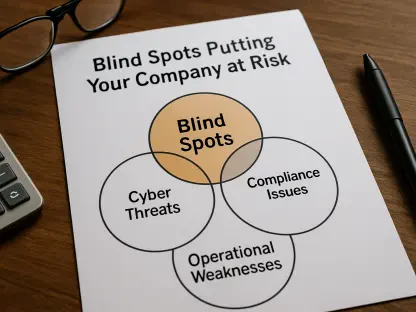In today’s rapidly evolving digital landscape, traditional cybersecurity measures are increasingly proving inadequate. The rise of cloud computing, remote work, bring your own device (BYOD) policies, and the Internet of Things (IoT) has expanded the attack surface, making it more challenging for organizations to protect their digital assets. As a result, there is a growing shift towards managed security services to address these complexities and enhance overall security.
The Evolution of Cybersecurity Needs
From Perimeter-Based Security to Comprehensive Solutions
Historically, cybersecurity focused on perimeter-based defenses like firewalls and Virtual Private Networks (VPNs). These tools were designed to protect a well-defined network boundary. However, with the decentralization of digital assets and the proliferation of remote work, these traditional measures are no longer sufficient. Modern workspaces require more sophisticated solutions that can adapt to the dynamic nature of today’s digital environments.
The shift from traditional, perimeter-based security to more comprehensive solutions is driven by the complexity and interconnectedness of current IT infrastructures. Previously, firewalls and VPNs provided adequate protection by creating a secure boundary around a network. However, as digital assets have become decentralized and employees increasingly work from remote locations, the network perimeter has effectively dissolved. This means that security measures must now protect distributed and often virtualized resources that are accessible from various endpoints. As a result, there’s a growing need for robust cybersecurity strategies that encompass a holistic view of an organization’s digital ecosystem.
The Challenges of Modern Cybersecurity
The complexity of modern IT environments presents significant challenges for in-house Security Operations Centers (SOC). Budget constraints and staffing limitations often hinder their ability to keep up with the ever-evolving threat landscape. This has led to an increased reliance on Managed Security Service Providers (MSSPs) and Managed Detection and Response (MDR) providers, who offer advanced security measures and expertise.
In-house security teams are often overwhelmed by the sheer volume of threats and the rapid pace at which they evolve. Cybercriminals are continuously developing new tactics, techniques, and procedures (TTPs), making it difficult for internal SOCs to remain current. Additionally, the shortage of skilled cybersecurity professionals means that many organizations struggle to maintain the necessary expertise within their own teams. This situation is further exacerbated by budgetary constraints, which limit the ability to invest in advanced security tools and training. Consequently, many organizations are turning to MSSPs and MDR providers who can offer specialized knowledge and resources that in-house teams may lack.
The Role of Managed Security Service Providers
Proactive Security Measures
MSSPs and MDR providers focus on preventing attacks rather than merely responding to them. They offer services like Vulnerability Management (VM) and Attack Surface Management (ASM), which are critical in identifying and mitigating security risks proactively. These services help organizations stay ahead of potential threats by continuously monitoring and assessing their digital environments.
Vulnerability Management involves the systematic scanning and mapping of an organization’s digital environment to identify weaknesses and recommend remediations. This process often employs standardized systems such as the Common Vulnerability and Exposure (CVE) and the Common Vulnerability Scoring System (CVSS) to prioritize threats based on their severity. By doing so, VM provides a structured approach to address the most pressing vulnerabilities and reduce the attack surface. This methodology ensures that security measures are targeted and effective, minimizing the risk of exploitation by cyber attackers.
Vulnerability Management and Attack Surface Management
Attack Surface Management extends the concept of vulnerability management by providing comprehensive visibility into the security posture of various hardware, websites, and virtual infrastructures. This is particularly crucial in modern digital workplaces where organizations may unknowingly possess numerous internet-facing assets susceptible to cyber threats. ASM continuously monitors these assets, offering a real-time and updated view of potential vulnerabilities.
By systematically identifying and addressing vulnerabilities across the entire digital footprint, ASM helps organizations maintain a robust security posture. This proactive approach ensures that emerging threats are detected early and mitigated before they can be exploited. Moreover, ASM enhances traditional vulnerability management by covering assets that may be outside the scope of regular scans, such as shadow IT resources and third-party components. As a result, organizations can achieve a more comprehensive understanding of their attack surface and implement effective security measures to safeguard against cyber threats.
Benefits of Outsourcing Security Services
Leveraging External Expertise
Outsourcing security services to MSSPs and MDR providers allows internal security teams to focus on immediate operational needs while leveraging the expertise of external specialists. These providers are more adept at staying current with emerging threats and can offer continuous threat monitoring and response. This division of labor can be particularly advantageous for organizations lacking the necessary skills or manpower to conduct comprehensive security operations.
By partnering with MSSPs and MDR providers, organizations can tap into a wealth of cybersecurity expertise that might otherwise be unattainable. These external specialists have access to advanced tools and resources that enable them to detect and respond to threats more effectively. Additionally, they are dedicated to staying informed about the latest developments in the cybersecurity landscape, ensuring that their clients benefit from the most up-to-date and effective security measures. This collaborative approach allows internal teams to concentrate on their core responsibilities while benefiting from the specialized knowledge and capabilities of external partners.
Cost-Effectiveness and Efficiency
Outsourcing can also be more cost-effective than maintaining an in-house SOC. MSSPs and MDR providers can offer advanced security measures at a fraction of the cost, allowing organizations to allocate resources more efficiently. This approach not only enhances security but also improves overall operational efficiency.
Maintaining an in-house SOC can be prohibitively expensive, particularly for smaller organizations with limited budgets. The costs associated with hiring and retaining skilled cybersecurity professionals, purchasing advanced security tools, and providing ongoing training can quickly add up. In contrast, outsourcing to MSSPs and MDR providers offers a more affordable alternative, as these providers can leverage economies of scale to deliver high-quality security services at a lower cost. This financial efficiency allows organizations to invest in other critical areas while still maintaining robust cybersecurity defenses.
Integrating Managed Services into Existing Security Frameworks
Self-Assessment and Preparation
Before adopting managed security services, organizations should conduct a thorough self-assessment. This involves inventorying digital assets, understanding the current security posture, and conducting penetration tests to identify vulnerabilities. This self-awareness aids in selecting the most appropriate and cost-effective service provider tailored to the specific needs of the organization.
A comprehensive self-assessment provides a clear understanding of the organization’s cybersecurity strengths and weaknesses. By inventorying digital assets, organizations can identify which resources are most critical and require the highest level of protection. Understanding the current security posture helps in determining the areas that need improvement and the specific services that would be most beneficial. Conducting penetration tests further reveals existing vulnerabilities and provides insights into potential attack vectors. Armed with this information, organizations can make informed decisions when selecting MSSPs and MDR providers, ensuring that the chosen services align with their unique security requirements.
Bundling Services for Comprehensive Coverage
Bundling services like ASM with MDR can offer comprehensive visibility into potential attacks and vulnerabilities. While traditional vulnerability management relies on regular scans and penetration tests, ASM provides a continuous, updated view of the attack surface. This integration enhances overall security by ensuring that no potential threats are overlooked.
Integrating ASM with MDR services creates a synergistic effect that enhances the overall effectiveness of cybersecurity measures. While MDR services provide real-time threat detection and response, ASM offers ongoing visibility into the organization’s digital assets. This combination ensures that emerging threats are identified and addressed before they can cause significant harm. Furthermore, bundling these services can streamline the security management process, reducing complexity and improving overall efficiency. By adopting a comprehensive and integrated approach, organizations can significantly bolster their cybersecurity defenses and reduce the risk of successful cyberattacks.
Choosing the Right Managed Security Service Provider
Evaluating Providers
Selecting the right MSSP or MDR provider is crucial for effective cybersecurity. Organizations should look for well-established, knowledgeable companies employing advanced, best-of-breed technologies. Reviews and ratings from third-party sources, experience in relevant industries, and mechanisms to reduce false positives are vital considerations during the selection process.
Evaluating potential MSSPs and MDR providers requires thorough due diligence to ensure that the chosen partner can meet the organization’s specific needs. Well-established providers with a proven track record demonstrate reliability and expertise in managing complex cybersecurity challenges. Advanced technologies and tools are essential for effective threat detection and response, and organizations should prioritize providers who utilize best-of-breed solutions. Reviews and ratings from independent sources offer valuable insights into the provider’s performance and customer satisfaction. Additionally, experience in relevant industries ensures that the provider understands the unique security requirements and threats faced by the organization. Mechanisms to reduce false positives are also important, as they prevent unnecessary alerts and allow security teams to focus on genuine threats.
Tailoring Services to Organizational Needs
Different organizations have unique security needs based on their size, industry, and digital footprint. It is essential to choose a provider that can tailor their services to meet these specific requirements. This customization ensures that the security measures implemented are both effective and efficient.
Customizing managed security services to align with the organization’s specific needs enhances the overall effectiveness of the security measures. Providers who offer tailored solutions can address the unique challenges and threats faced by the organization, ensuring that the security services are relevant and impactful. This customization also improves the efficiency of security operations, as the solutions are designed to fit seamlessly into the existing security framework. By selecting a provider that can adapt their services to the organization’s needs, organizations can achieve a higher level of protection and optimize their security investments.
The Future of Cybersecurity
Adapting to Digital Transformation
As organizations continue to pursue digital-first strategies and automation, the need for advanced, proactive security solutions will only grow. Managed security services offer a scalable and adaptable approach to cybersecurity, making them well-suited for the complexities of modern digital workspaces.
Digital transformation initiatives often involve the implementation of new technologies and processes that can introduce additional security risks. As organizations adopt cloud computing, IoT devices, and other advanced technologies, their attack surface expands, making them more vulnerable to cyber threats. Managed security services provide the flexibility and scalability needed to address these evolving security challenges. By leveraging the expertise of MSSPs and MDR providers, organizations can implement proactive security measures that adapt to the changing digital landscape, ensuring that their digital assets remain protected.
Embracing Continuous Improvement
In the swiftly shifting digital world, traditional cybersecurity strategies are increasingly falling short. The widespread adoption of cloud computing, the surge in remote work, the implementation of bring your own device (BYOD) policies, and the proliferation of Internet of Things (IoT) devices have all broadened the attack surface. This expansion has made it far more difficult for companies to safeguard their digital assets effectively. As these challenges intensify, organizations find themselves turning towards managed security services. These services offer a more robust and adaptive approach to coping with the evolving nature of cyber threats. Managed security services provide continuous monitoring, threat intelligence, and specialized expertise that many businesses can’t maintain in-house. By leveraging these services, organizations gain access to up-to-date tools and techniques managed by experts. This shift towards managed security services reflects a practical and strategic response to the complexities of the modern threat landscape, enhancing overall security and resilience in an environment where threats are continually evolving.









